Archive for the ‘Department Of Homeland Security (DHS)’ Category
Monday, November 21st, 2016
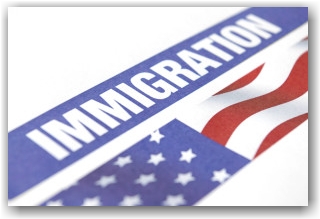 The long-awaited final rule to modernize and improve several aspects of employment-based nonimmigrant and immigrant visa programs, in order to retain EB-1, EB-2 and EB-3 immigrant workers and high-skilled nonimmigrant workers, is moving forward and has made it through the OMB review process. It was published in the Federal Register on November 18, 2016 and will be effective in 60 days. USCIS has also amended regulations to better enable U.S. employers to hire and retain certain foreign workers who are beneficiaries of approved employment-based immigrant visa petitions and are waiting to become lawful permanent residents. This rule goes into effect on Jan. 17, 2017, just before President Obama leaves office.
The long-awaited final rule to modernize and improve several aspects of employment-based nonimmigrant and immigrant visa programs, in order to retain EB-1, EB-2 and EB-3 immigrant workers and high-skilled nonimmigrant workers, is moving forward and has made it through the OMB review process. It was published in the Federal Register on November 18, 2016 and will be effective in 60 days. USCIS has also amended regulations to better enable U.S. employers to hire and retain certain foreign workers who are beneficiaries of approved employment-based immigrant visa petitions and are waiting to become lawful permanent residents. This rule goes into effect on Jan. 17, 2017, just before President Obama leaves office.
Among other things, DHS is amending its regulations to:
- Clarifies and improves longstanding DHS policies and practices implementing sections of the American Competitiveness in the Twenty-First Century Act and the American Competitiveness and Workforce Improvement Act related to certain foreign workers, which will enhance USCIS’ consistency in adjudication.
- Better enables U.S. employers to employ and retain high-skilled workers who are beneficiaries of approved employment-based immigrant visa petitions (Form I-140 petitions) while also providing stability and job flexibility to these workers. The rule increases the ability of these workers to further their careers by accepting promotions, changing positions with current employers, changing employers and pursuing other employment opportunities. This means that you can use the previous employer’s I-140 petition to extend your H-1B with a new employer even if it is withdrawn (as long as it was withdrawn more than 180 days after approval), or in the event of the termination of the employer’s business. So, there is no I-140 portability; you will still need a new labor certification and I-140 petition to file your adjustment of status application.
- The final rule provides two grace periods of up to 10 days, consistent with those already available to individuals in 13 some nonimmigrant classifications, to individuals in the E-1, E-2, E-3, L-1, and TN classifications. The rule allows an initial grace period of up to 10 days prior to the start of an authorized validity period, allowing nonimmigrants in the above classifications a reasonable amount of time to enter the US and prepare to begin employment. The rule also allows a second grace period of up to 10 days after the end of an authorized validity period, which provides a reasonable amount of time to depart the US or take other actions to extend, change, or maintain lawful status.
- Establishes a grace period of up to 60 consecutive days during each authorized validity period for certain high-skilled nonimmigrant workers when their employment ends before the end of their authorized validity period provided their authorized stay is valid for at least 60 days after such cessation. If not, the grace period will end on the date the authorized date is set to expire. This will obviously enable own to more readily pursue new employment and an extension of their nonimmigrant status.
- The Final rule allows allows certain high-skilled individuals in the United States to apply for work authorization, given:
- They are the principal beneficiaries of an approved Form I-140 petition,
- An immigrant visa is not authorized for issuance for their priority date, and
- They can demonstrate compelling circumstances exist that justify DHS issuing an employment authorization document in its discretion. Such employment authorization may only be renewed in limited circumstances and only in one year increments.
- Automatically extends the employment authorization in the same category and validity of Employment Authorization Documents for up to 180 days from the date of the prior EAD’s expiry (EADs or Form I-766’s) or until djudication of the EAD nrenewal application, for certain individuals who apply on time to renew their EADs. The Form I-9 rule is also updated to permit an I-797 receipt notice to be accepted as a permissible I-9 document, in conjunction with the expired EAD, to re-verify the foreign national’s work authorization. This additional 180-day period will not apply to those categories that first require the approval of an underlying application before the EAD renewal can be adjudicated.
- Eliminates the regulatory provision that requires USCIS to adjudicate the Form I-765, Application for Employment Authorization, within 90 days of filing and that authorizes interim EADs in cases where such adjudications are not conducted within the 90-day timeframe.
- Clarifies various policies and procedures related to the adjudication of H-1B petitions, including, among other things, providing H-1B status beyond the six year authorized period of admission, determining cap exemptions and counting workers under the H-1B cap program.
For more information, please refer here for the Final Rule. If you have any questions, please contact our office. We will continue to keep you posted on the implementation of these new policies.
Tags: adjustment of status, E-3 visa, eb-1, eb-2, eb-3, Employment-Based immigrant visas, Grace Periods, Green-Cards, H-1B, High-Skilled Workers, I-140 Petition, Immigration News, L-1, O-1, tn, USCIS
Posted in Department Of Homeland Security (DHS), Department Of Labor (DOL), H-1B Visas, Immigrant Visas (I-140 Petitions), Immigration News, L-1 Visa, O-1 Visas, TNs, USCIS | Comments Off on USCIS Publishes Final Rule to Modernize Certain Employment-Based Immigrant and Nonimmigrant Visa Programs
Saturday, November 19th, 2016
By: Allison McDonnell, ICG Content Coordinator
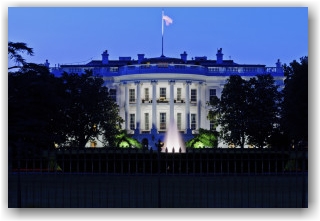
President-elect, Donald Trump, will take office as the United State’s 45th president on January 20, 2017. Trump ran his presidential campaign from a clear anti-immigration platform. His ten-point plan, which includes limiting legal immigration, could have substantial effects on business immigration in the U.S. However, it is still too soon to tell exactly which stances Trump’s administration will, or will be able to, follow through on. Changes on the business-related immigration side are likely to come in incremental stages and later on, as his first priority will be undocumented immigrants with criminal records.
H-1B Visa Program
Throughout his campaign, Trump spoke out against the H-1B visa program, arguing that it is an abused process used to replace American workers with cheap labor. He claimed several times that his intentions are to end the program completely. However, experts say that the program will more than likely not be eradicated, but simply reformed. For one, Trump, himself, understands the value of high tech global talent. In addition, the fact that he desires a strong relationship with India, whose tech workers are among the largest group of beneficiaries of the H-1B program, will likely keep him from abolishing the program all together. With popularity of reform from several congressmen and Trump’s base, it is likely that smaller caps and more stringent qualifications will be imposed.
E-1 and E-2 Treaty Trader and Investor Visas
Trump has been less vocal about planned changes to employment-based visas outside of the H-1B visa. While it is likely that Trump will make major reforms to the H-1B program, we could also see some changes to the E-1 and E-2 visa classifications, given that they are increasingly the second-best option behind the H-1B visa for many immigrants. For one, a tougher application of legal standards in immigration court and in consular processing may be applied to all visa categories. In addition, caps could be implemented, which may be country-specific. However, since a key part of the E-2 visa program is job creation, it could quite possibly go the other way, with the category growing in number.
Employment Eligibility Verification: I-9 and E-Verify Programs
Considering employment draws immigrants to the United States, it is likely that we will see stricter enforcement of the Form I-9 verification process under Trump’s presidency. Starting next year, there will likely be more ICE officers and immigration judges hired to expedite cases. This increase in staff may lead to an increase in the number of worksite inspections for I-9 compliance. It is also possible that there will be an increase in penalties and fines for any violations uncovered. Therefore, it is important for employer’s to ensure that their paperwork, policies, and practices are in order in case of an audit. Given that Trump may overturn President Obama’s Deferred Action for Childhood Arrival (DACA), employers also need to be aware of which of their current foreign-born employees may become immediately undocumented and take proper action.
Trump has consistently applauded the E-Verify process for its systematic ability to filter out unauthorized employment. In his position paper on immigration, he would mandate that the E-Verify process be used across the U.S. Although, Trump will likely meet the same resistance as Congress has in the past, when it tried and failed several times to implement mandatory E-Verify. That being true, Trump may still be able to strengthen or increase the program through unilateral executive orders.
In Closing
Although it is still too soon to tell precisely which of Trump’s campaign promises he will have the time, resources, or support to follow through on, it is a good idea to be informed and alert to the timing and the next steps required concerning your immigration matters and remain proactive, both as an employer and employee. If you haven’t moved forward on a viable case, we would recommend that you meet with immigration counsel to prepare for the upcoming months under the new administration. You can contact our office here.
Tags: DACA, Department Of Homeland Security (DHS), E-1/E-2 Visas, H-1B, I-9/E-Verify, Immigration Legislation, Immigration News, Immigration Reform, Trump Immigration Plan, Undocumented Workers, USCIS
Posted in Comprehensive Immigration Reform, Congress, DACA | DAPA, Department Of Homeland Security (DHS), Employer Compliance, H-1B Visas, I-9/E-Verify News, Immigration Legislation, Immigration News, USCIS | Comments Off on Changes to Business-related Immigration Under Trump’s Administration
Tuesday, January 19th, 2016
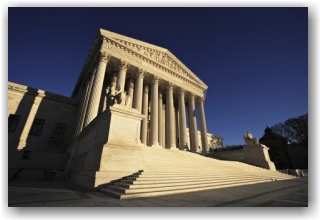 The Obama administration took the battle over immigration to the Supreme Court on Friday, formally asking the justices to review a federal court decision that left in place a nationwide injunction against President Barack Obama’s sweeping initiative to grant quasi-legal status and work permits to millions of immigrants here illegally.
The Obama administration took the battle over immigration to the Supreme Court on Friday, formally asking the justices to review a federal court decision that left in place a nationwide injunction against President Barack Obama’s sweeping initiative to grant quasi-legal status and work permits to millions of immigrants here illegally.
DAPA would grant deferred action status to those who have lived in the United States for at least 5 years and have not committed felonies or repeated misdemeanors, and have children who are US citizens or lawful permanent residents. Deferred action is not full legal status, but in this case would come with a three-year, renewable work permit and exemption from deportation. The Court will hear arguments in April and rule by June.
Read more here From Politico here
Tags: DAPA, Deferred Action, Department Of Homeland Security (DHS), Immigration Legislation, Immigration News, Legal Status, Supreme Court, undocumented immigrants
Posted in DACA | DAPA, Department Of Homeland Security (DHS), Immigration Legislation, Immigration News, USCIS | Comments Off on Breaking News! Obama’s DAPA Appeal to Take Center Stage in Supreme Court
Wednesday, January 6th, 2016
 USCIS is seeking public comments on a proposed rule that would modernize and improve certain important aspects of employment-based nonimmigrant and immigrant visa programs. USCIS is also proposing regulatory amendments to better enable U.S. employers to hire and retain certain foreign workers who are beneficiaries of approved employment-based immigrant visa petitions and are waiting to become lawful permanent residents (LPRs).
USCIS is seeking public comments on a proposed rule that would modernize and improve certain important aspects of employment-based nonimmigrant and immigrant visa programs. USCIS is also proposing regulatory amendments to better enable U.S. employers to hire and retain certain foreign workers who are beneficiaries of approved employment-based immigrant visa petitions and are waiting to become lawful permanent residents (LPRs).
Read the notice of proposed rulemaking published in the Federal Register on December 31, 2015: Retention of EB-1, EB-2 and EB-3 Immigrant Workers and Program Improvements Affecting High-Skilled Nonimmigrant Workers. The public has until February 29, 2016 to comment.
Among other things, the DHS proposals to amend its regulations entail the following:
… To clarify and improve longstanding agency policies and procedures implementing sections of the American Competitiveness in the Twenty-First Century Act (AC21) and the American Competitiveness and Workforce Improvement Act (ACWIA) related to certain foreign workers, which will enhance USCIS’ consistency in adjudication.
… To better enable U.S. employers to employ and retain certain foreign workers who are beneficiaries of approved employment based immigrant visa petitions (I-140 petitions) while also providing stability and job flexibility to these workers. The proposed rule will increase the ability of such workers to further their careers by accepting promotions, making position changes with current employers, changing employers, and pursuing other employment opportunities.
… To improve job portability for certain beneficiaries of approved I-140 petitions by limiting the grounds for automatic revocation of petition approval
… To clarify when individuals may keep their priority date to use when applying for adjustment of status to lawful permanent residence, including when USCIS has revoked the approval of their approved I 140 petitions because the employer withdrew the petition or because the employer’s business shut down.
… To allow certain high-skilled individuals in the United States in E-3, H-1B, H-1B1, L-1, or O-1 nonimmigrant status to apply for one year of unrestricted employment authorization if they:
1. Are the beneficiaries of an approved I-140 petition,
2. Remain unable to adjust status due to visa unavailability, and
3. Can demonstrate that compelling circumstances exist which justify issuing an employment authorization document.
Such employment authorization may only be renewed in limited circumstances.
… To clarify various policies and procedures related to the adjudication of H-1B petitions, including, among other things, extensions of status, determining cap exemptions and counting workers under the H-1B visa cap, H-1B portability, licensure requirements, clarification concerning which H-1B nonimmigrants are exempt from the statutory cap to ensure that those who are contributing to US research and the education of Americans may remain in the USA; and protections for whistleblowers.
… To establish a one-time grace period during an authorized validity period of up to 60 days for certain high-skilled nonimmigrant workers whenever their employment ends so that they may more readily pursue new employment and an extension of their nonimmigrant status.
These proposed changes do not take effect with the publication of the notice of proposed rulemaking. Instead, they would take effect on the date indicated in the final rule when the final rule is published in the Federal Register. Here is the proposed rule. To submit comments, follow the instructions. You may submit comments, identified by DHS Docket No. USCIS-2015-0008, by one of the following methods:
Federal eRulemaking Portal: You may submit comments to USCIS by visiting http://www.regulations.gov. Follow the instructions for submitting comments. By email: You may submit comments directly to USCIS by emailing them to: USCISFRComment@dhs.gov. Please include DHS Docket No. USCIS-2015-0008 in the subject line of the message.
The Department of Labor: Modernizing the Permanent Labor Certification Program (PERM)
DOL is engaging in rule making that will consider options to modernize the PERM program to be more compatible to changes in the US workforce, to further align the program design with the objectives of the US immigration system and the needs of workers and employers, and to enhance the integrity of the labor certification process. This is not expected to be proposed until April 2016.
Tags: AOS Portability, Department Of Homeland Security (DHS), DOL, eb-1, eb-2, eb-3, Employment-Based Immigration, H-1B, H-1B Portability, I-140 Petition, Immigration News, LPR, Proposed Immigration Legislation, Proposed Rules for H-1B and EB Immigration, USCIS
Posted in Department Of Homeland Security (DHS), Department Of Labor (DOL), H-1B Visas, Immigrant Visas (I-140 Petitions), Immigration Legislation, Immigration News, O-1 Visas, USCIS | Comments Off on Employment-Based Immigration Proposals Open for Public Comment
Sunday, October 25th, 2015
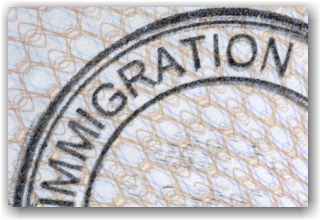 Reports are that DHS has begun circulation of one of Obama’s employment-based executive actions which is also in response to a judge’s order that struck down the existing STEM OPT program for a lack of a notice & commenting period with the issuance of the 2008 interim rule. The public will have 30 days (until November 18) to comment on the proposed rule. You can view the notice in the Federal Register here
Reports are that DHS has begun circulation of one of Obama’s employment-based executive actions which is also in response to a judge’s order that struck down the existing STEM OPT program for a lack of a notice & commenting period with the issuance of the 2008 interim rule. The public will have 30 days (until November 18) to comment on the proposed rule. You can view the notice in the Federal Register here
The Rule will make several changes to the F-1 STEM OPT program. Most importantly, the STEM OPT extensions would increase from 17 to 24 months.
The new rule adds both additional benefits and employer requirements for all individuals and companies utilizing OPT.
Here is an excellent summary of the proposed changes as posted on ILW.com.
:::::::::::::::
Immigration Compliance Group provides US inbound immigration services to individuals and employers throughout the USA and abroad. We specialize in business immigration and have a depth of experience in the IT, healthcare, arts, entertainment and sports industries, among others. Our services include complex business visas for investors, multinational managers, skilled professionals, outstanding individuals of high achievement (O-1, P visas, EB-1 and EB-2 Exceptional Ability cases) and PERM Labor Certification. Our doors are always open for new clients — we extend a 20% discount on the first case with our firm. Contact us at info@immigationcompliancegroup.com or call 562 612.3996. Follow up on Twitter (@immigration_biz) Google Plus and check out our groups on LinkedIn: I-9E-Verify: Smart Solutions for Employers and Immigration InFocus News.
Tags: Department Of Homeland Security (DHS), F-1 Visas, Immigration News, OPT, STEM, STEM Extension, USCIS
Posted in Department Of Homeland Security (DHS), Immigration Legislation, USCIS | Comments Off on Details on the Proposed STEM OPT Rule
Thursday, October 15th, 2015
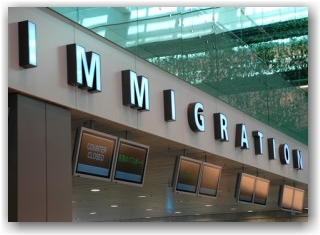 Stakeholders are outraged by the most recent development with the so-called streamlining of the allocation of immigrant visas that are published monthly in the Department of State’s (DOS) Visa Bulletin.
Stakeholders are outraged by the most recent development with the so-called streamlining of the allocation of immigrant visas that are published monthly in the Department of State’s (DOS) Visa Bulletin.
Unless otherwise indicated on the USCIS website at www.uscis.gov/visabulletininfo,
individuals seeking to file applications for adjustment of status with USCIS in the Department of Homeland Security must use the “Application Final Action Dates” charts in the Visa Bulletin for determining when they can file such applications. When USCIS determines that there are more immigrant visas available for the fiscal year than there are known applicants for such visas, USCIS will state on its website that applicants may instead use the “Dates for Filing Visa Applications” charts in the Bulletin. The USCIS website statement is supposed to be posted within one week of the Visa Bulletin publish date.
Applicants for adjustment of status may refer to USCIS for additional information by visiting www.uscis.gov/visabulletininfo. USCIS has indicated on their website (above link) that that you may use the Dates for Filing Visa Applications chart for the corrected October 2015 and November 2015 Visa Bulletins.
Something has absolutely got to change here. This has reached a level of complete and utter absurdity.
Refer here for November filing date information.
For background information on this issue, refer here
Tags: adjustment of status, Department Of Homeland Security (DHS), DOS, Immigrant Visa Allocation, Immigration News, Permanent Residency Applications, USCIS, visa bulletin, Visa Gate
Posted in Department Of Homeland Security (DHS), Department of State, Immigrant Visas (I-140 Petitions), Immigration News, USCIS | Comments Off on DOS/USCIS’ Lame Attempt at ‘streamlining'(?) the Immigrant Visa Process
Monday, September 14th, 2015

I have to give USCIS kudos for working with new technology. While they test the site and complete development, go into the link and ask a question. They are asking that we try out the site. For more on the story and the test site, go here and join our new group on LinkedIn while you visit.
______
Immigration Compliance Group provides US inbound immigration services to individuals and employers throughout the USA and abroad. We specialize in business immigration and have a depth of experience in the IT, healthcare, arts, entertainment and sports industries, amongst others. Our services include complex business visas for investors, multinational managers, skilled professionals, outstanding individuals of high achievement (O-1, P visas, EB-1 and EB-2 Exceptional Ability cases) and PERM Labor Certification. We additionally provide employer compliance consulting services on proper I-9 (Employment Eligibility Verification) management, auditing, training, and work with our clients to develop a culture of immigration compliance. Our door is open for new clients — we extend a 20% discount on the first case with our firm.
Tags: Department Of Homeland Security (DHS), Emma the Virtual Assistant, Immigration Compliance Group, Immigration News, USCIS
Posted in Department Of Homeland Security (DHS), Immigration News, USCIS | Comments Off on USCIS’ Answer to “Suri” — Emma, the Virtual Assistant!
Sunday, December 7th, 2014

On November 20, 2014, President Obama announced efforts to retool critical aspects of the immigration system—how we enforce immigration laws, how we process immigration benefits, how we encourage further business innovation, and how we welcome immigrants to this nation.
Following the address, executive agencies made available intra-agency memoranda and fact sheets detailing specific actions that have already been taken, or will be taken in the future in ten areas within the confines of the law. These actions generally involve border security, the current unlawfully present population, or future legal immigration.
Below we link to Fact Sheets that address the details that we are aware of at this time of the 10 Executive Action Initiatives with links to the memoranda. Additional guidance will be forthcoming.
The expansion of the DACA program that has now removed the age restriction and increases employment authorization from 2 year to 3-year increments, is expected to go into effect on or about February 20, 2015. The implementation of DAPA, the Deferred Action for Parental Accountability, that allows parents of US citizens and lawful permanent residents who have been present in the country since January 1, 2010 to request deferred action and employment authorization, is expected to roll out approximately mid-May 2015.
Resources:
http://www.uscis.gov/immigrationaction
http://www.dhs.gov/immigration-action
http://www.immigrationpolicy.org/special-reports/guide-immigration-accountability-executive-action
Should you have questions at this time or would like to retain our office to assist you or your employees with their immigration matters, please contact us at info@immigrationcompliancegroup.com or call 562 612.3996.
Tags: Business Innovation, DACA, DAPA, Department Of Homeland Security (DHS), Executive Action, H-1B, H-4, I-9 Form, ICE, Immigration News, Immigration Reform, Investor Visas, Undocumented Workers, USCIS
Posted in Comprehensive Immigration Reform, Congress, DACA | DAPA, Department Of Homeland Security (DHS), Employer Compliance, H-1B Visas, I-9/E-Verify News, ICE, Immigration News | Comments Off on Executive Actions on Immigration
Friday, November 21st, 2014

We applaud President Obama’s announcement of broad executive action to offer temporary relief from deportation to millions of undocumented immigrants, stating that the separation of families or the oppression of low-wage immigrant workers is “not who we are as Americans.”
Concurrent with the televised nationwide presidential address last night, the Department of Homeland Security (DHS) Secretary issued a series of memoranda outlining the various facets of the programs and policies which would constitute, in total, “executive action” relating to immigration matters such as: Revising Removal Priorities, ending Secure Communities and replacing it with a New Priority Enforcement Program, expanding DACA, extending DACA to Parents of US citizens and Permanent Residents, revising parole rules, expanding Provisional Waivers to spouses and children, modernizing high-skilled business-related immigration, and more. We link to this information above.
Additional specific information on the initiatives contained in the Executive Action taken by President Obama can be found here
Tags: Congress, DACA, Department Of Homeland Security (DHS), Deportation, Executive Action, H-1B Visas, Immigrant Visas (I-140 Petitions), Immigration News, Immigration Reform, Parole Rules, PERMANENT RESIDENCY, Provisional Waivers, Removal, Securre Communities, Skilled Workers, USCIS
Posted in Comprehensive Immigration Reform, Congress, DACA | DAPA, Department Of Homeland Security (DHS), H-1B Visas, Immigration News, USCIS | Comments Off on The Facts: Fixing a Broken Immigration System Through Executive Action
Wednesday, May 7th, 2014
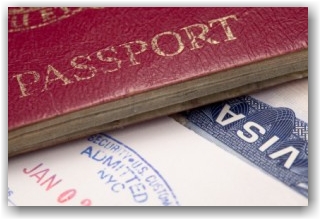
Under existing regulations, DHS does not extend employment authorization to dependents (also known as H-4 nonimmigrants) of H-1B nonimmigrant workers. The change proposed by DHS, would allow H-4 dependent spouses of certain H-1B nonimmigrant workers to request employment authorization, as long as the H-1B worker has already started the process of seeking lawful permanent residence through employment.
Eligible individuals would include H-4 dependent spouses of principal H-1B workers who:
- Are the beneficiaries of an approved Form I-140, Immigrant Petition for Alien Worker; or
- Have been granted an extension of their authorized period of stay in the United States under the American Competitiveness in the Twenty-first Century Act of 2000 (AC21) as amended by the 21st Century Department of Justice Appropriations Authorization Act. AC21 permits H-1B workers seeking lawful permanent residence to work and remain in the United States beyond the six-year limit. Refer to AC 21 12/27/2005 Aytes Memo for details.
Proposal to Enhance Opportunities for Highly-Skilled Workers: H-1B1 (Chile and Singapore) and E-3
Specifically, the change to the regulation would:
- Update the regulations to include nonimmigrant high-skilled specialty occupation professionals from Chile and Singapore (H-1B1) and from Australia (E-3) in the list of classes of aliens authorized for employment incident to status with a specific employer.
- Clarify that H-1B1 and principal E-3 nonimmigrants are allowed to work without having to separately apply to DHS for employment authorization. Under current regulations, employers of workers in E-3, H-1B1, or CW-1 status must generally file a petition requesting the extension of the employee’s status well before the initial authorized duration of status expires.
- Allow E-3, H-1B1 and CW-1 nonimmigrant workers up to 240 days of continued work authorization beyond the expiration date noted on their Form I-94, Arrival/Departure Record, while the extension request is pending.
It would affect workers in specialty occupation nonimmigrant classifications for professionals from Chile and Singapore (H-1B1) and Australia (E-3), as well as Commonwealth of the Northern Mariana Island (CNMI)-Only Transitional Workers (CW-1).
Finally, this proposal would also expand the current list of evidentiary criteria for employment-based first preference (EB-1) outstanding professors and researchers to allow the submission of evidence comparable to the other forms of evidence already listed in the regulations. This proposal would harmonize the regulations for EB-1 outstanding professors and researchers with other employment-based immigrant categories that already allow for submission of comparable evidence.
Both Notices of Proposed Rulemaking will soon publish in the Federal Register. DHS encourages the public to comment on the proposed rules through www.regulations.gov. All public comments will be considered before the final rules are published and go into effect. We will keep you posted on next steps when this actually becomes effective.
The DHS Press Release
Tags: AC21, Department Of Homeland Security (DHS), DOL, E-3 Spouse Work Authorization, eb-1, eb-2, eb-3, H-1B Specialty Workers, H-1B1 Spouse Work Authorization, H-4 Work Authorization, Immigrant Visas (I-140 Petitions), Immigration News, PERM Labor Certification, USCIS
Posted in Department Of Homeland Security (DHS), Department Of Labor (DOL), H-1B Visas, Immigrant Visas (I-140 Petitions), Immigration News, USCIS | Comments Off on DHS Announces Proposed Rulemaking for H-4 Spouse Work Authorization
 The long-awaited final rule to modernize and improve several aspects of employment-based nonimmigrant and immigrant visa programs, in order to retain EB-1, EB-2 and EB-3 immigrant workers and high-skilled nonimmigrant workers, is moving forward and has made it through the OMB review process. It was published in the Federal Register on November 18, 2016 and will be effective in 60 days. USCIS has also amended regulations to better enable U.S. employers to hire and retain certain foreign workers who are beneficiaries of approved employment-based immigrant visa petitions and are waiting to become lawful permanent residents. This rule goes into effect on Jan. 17, 2017, just before President Obama leaves office.
The long-awaited final rule to modernize and improve several aspects of employment-based nonimmigrant and immigrant visa programs, in order to retain EB-1, EB-2 and EB-3 immigrant workers and high-skilled nonimmigrant workers, is moving forward and has made it through the OMB review process. It was published in the Federal Register on November 18, 2016 and will be effective in 60 days. USCIS has also amended regulations to better enable U.S. employers to hire and retain certain foreign workers who are beneficiaries of approved employment-based immigrant visa petitions and are waiting to become lawful permanent residents. This rule goes into effect on Jan. 17, 2017, just before President Obama leaves office.








